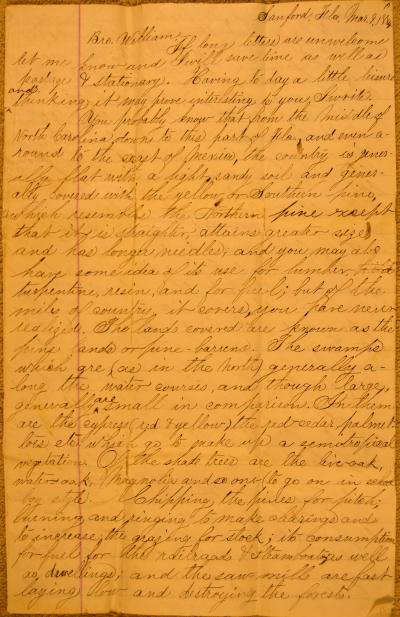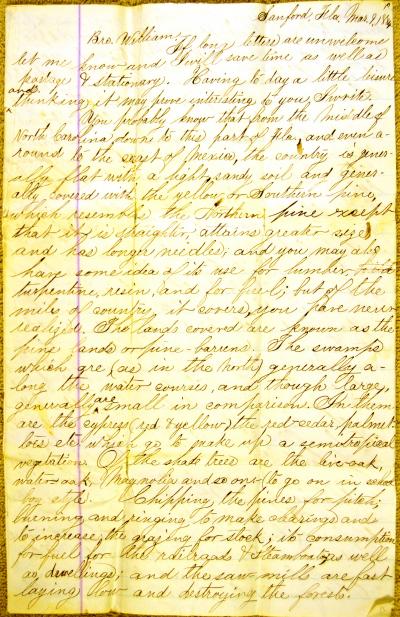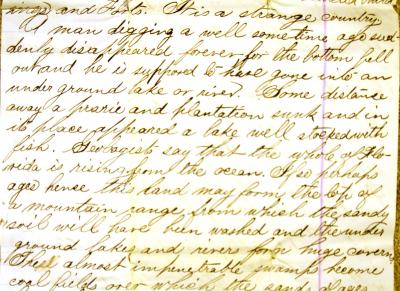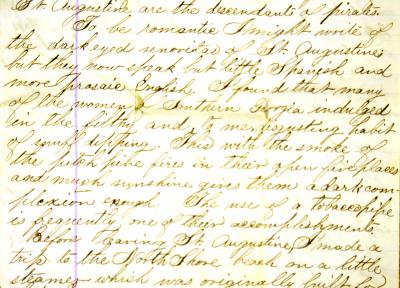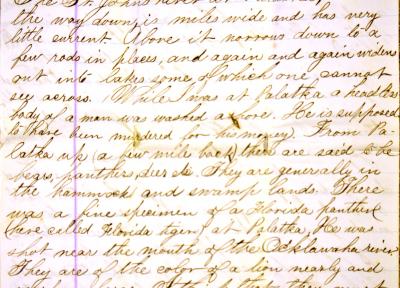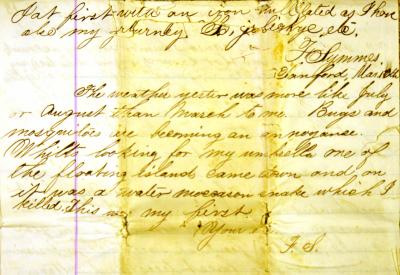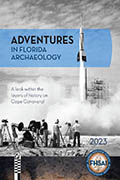A letter penned in Sanford, Seminole County, Florida on March 9, 1884 and sent to a man in Massachusetts was eventually was carried to Minnesota and has now returned to Florida to be preserved in the archives of the Library of Florida History in Cocoa, Brevard County, only about 50 miles but 130 plus years from where it started. Try that with an e-mail.
The four page missive offers a fascinating insight to Florida in the beginning decades of its post (Civil) war growth, when the entire state only had about 250 thousand residents, but the impact of development on the environment was already evident to the thoughtful observer.
The author, identified only as “F. Symmes”, was clearly such an observer, but little else is known about him. He appears to have been a traveling salesman covering the South Eastern states. He had made his way to Jacksonville by train, visited St. Augustine and then steamed up the St. John’s River past Palatka to Sanford.
He remarks to his recipient, “Bro(ther) William”, this is as far as he will go because he is running out of money and travel in Florida is expensive. (For the record, a William F. Symmes, 31, of Winchester, Middlesex Co., Massachusetts, a piano case maker, is found in the 1880 U.S. census. He has not been found with a matching brother in indexes of earlier census, yet. Nor has a likely F. Symmes been identified.)
Whatever his livelihood, he was an astute observer and reporter. On the first page he notes the impact growth is having on the forests, “Chipping the pines for pitch, burning and ringing to make clearings and to increase the grazing for stock; its consumption for fuel for the railroads and steamships as well as dwellings’ and the saw mills are fast laying low and destroying the forests.”
He reports on the dangers of sinkholes and on the state’s geology.
Like a tourist of any era, he is taken by the alligators.
He is dismissive of the “dark eyed senoritas of St. Augustine,” at least in this letter home.
In the midst of reports on the Florida wildlife he casually reports on a murder, almost like any modern Florida newscast.
As with any newscast, it includes a weather report, hot for March, and a kicker story at the end, in this case how he killed his first water moccasin.
His stories offer some real insights; the man murdered for his money indicates the flow of investment money into the state. It was something of a gold rush, but the gold was citrus and hundreds were moving to the state hoping to cash in. As Mr. Symmes wryly noted, the growers were not making money, but the folks with the tree nurseries were, much the way folks selling work pants and tools were making money off prospectors out west.
And you could always cater to the tourists. He offered to send his brother a baby alligator since shops were selling and shipping them to the North for less than a dollar. Now that’s Florida.
